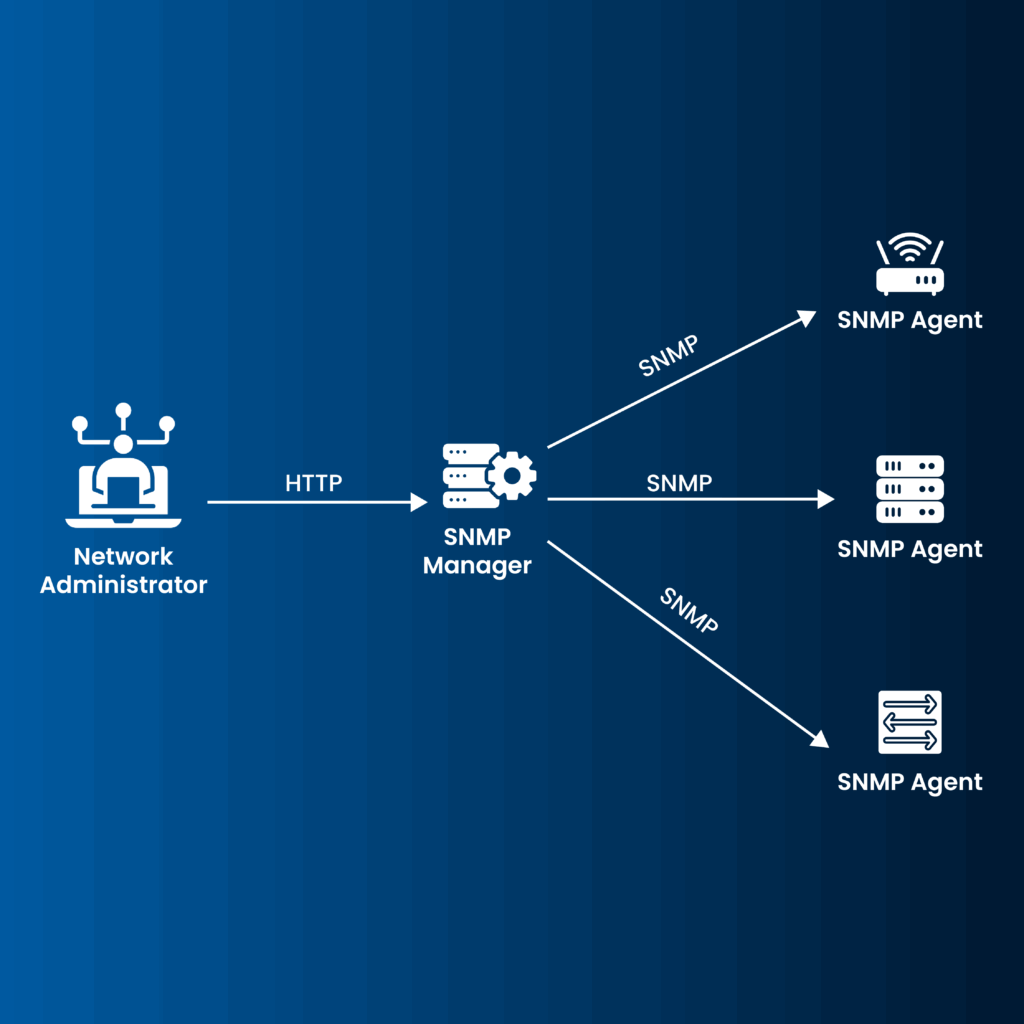What is SNMP? The Importance of SNMP in Network Monitoring
What is SNMP, and why is it critical for modern network monitoring and proactive infrastructure management?
One of the most widely used protocols in network management and monitoring is SNMP (Simple Network Management Protocol). A wide range of devices, including routers, switches, servers, printers, and even IoT devices, can be managed via SNMP. This protocol enables IT teams to collect and monitor critical metrics—such as CPU, memory, disk usage, port status, and network traffic—in real time from a centralized platform. Thanks to this capability, SNMP serves as a cornerstone for proactive monitoring.

How Does SNMP Work?
SNMP consists of three main components:
- Managed Device: A device on the network that supports SNMP.
- Agent: The SNMP software running on the device, which collects data and delivers it to the SNMP Manager.
- SNMP Manager: Provides centralized monitoring by collecting information from all devices.
With this structure, network administrators can remotely monitor, configure devices, and set up alarms.
What is Node?
Every device or endpoint managed via SNMP is referred to as a node. A switch, router, firewall, server, or even an IoT device can function as an SNMP node. In other words, a node is a device monitored by SNMP. By managing nodes, the network topology can be mapped, dependencies between devices can be understood, and potential bottlenecks can be identified in advance.
Polling refers to the SNMP Manager periodically retrieving information from a node at regular intervals, whereas a trap is an unsolicited alert sent by the node to the SNMP Manager when an unexpected event occurs (e.g., a connection loss or high CPU usage). In short, nodes are the source of data: polling collects regular performance metrics, while traps notify of critical real-time events. Together, they form the foundation of a robust monitoring infrastructure.
SNMP Polling and Polling Methods
There are two primary methods of collecting data from devices in SNMP:
- Polling: The SNMP Manager requests information from devices at regular intervals. This method enables periodic data tracking.
- Trap: The device automatically sends a notification to the SNMP Manager when a critical event occurs. This ensures administrators are instantly aware of incidents.
Both methods play a critical role in monitoring the overall health of the network.
Which Port Does SNMP Use?
SNMP communication typically uses UDP port 161. In addition, UDP port 162 is reserved for Trap messages. Knowing this is particularly important when configuring firewalls and network security settings.
Differences Between SNMPv1, SNMPv2, and SNMPv3
SNMP has three main versions, each offering different features:
- SNMPv1: The oldest version, simple but weak in terms of security.
- SNMPv2: Provides more performance measurements and supports bulk data retrieval.
- SNMPv3: Enhances security with authentication and encryption support. Today, it is recognized as the most secure SNMP version.
Advantages of SNMP in Network Management
- Provides centralized monitoring of all devices.
- Contributes to capacity planning through performance tracking.
- Reduces troubleshooting time with instant fault notifications.
- Works compatibly with devices from many different vendors thanks to being a standard protocol.
Conclusion
What is SNMP, and why does it play a critical role in modern network management? SNMP (Simple Network Management Protocol) allows IT teams to monitor, manage, and collect real-time performance data from a wide range of devices—from routers and switches to servers and IoT endpoints—enabling proactive detection of anomalies and ensuring the smooth operation of complex infrastructures.
SNMP is an indispensable protocol for modern network management. The choice of version depends on the security requirements and scale of the network. However, whether in small or large infrastructures, SNMP always takes network visibility and manageability one step further.
Fill the Form, We’ll Reach Out!


